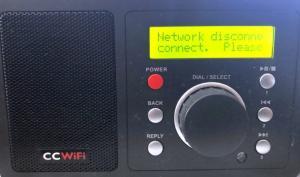Understanding Streaming Aggregation

[February 2021] It is not enough just to stream. The idea is to attract more to the stream than you might lose from off-air listeners. How can you do that? David Bialik explains.
Many broadcasters have come to the realization that they must stream. Streaming is important and should be understood.
Streaming is an extension of distributing your content. However, putting a “Listen Live” button on a website is not the end-all answer for streaming radio.
What many do not take into account is that the way the stream is promoted is also important. Simply, giving the station’s URL is not the answer.
Yes, you are enabling the audience to find you. Yes, the on-air staff will say go to the button on the website. But, you are only addressing the audience you already have. One must realize that there are multiple ways for the audience to listen to the stream: the station’s website, a mobile player, an aggregator, or an Internet radio.
And, considering that most listening is done with mobile devices (i.e. phones) you must make your website and buttons workable in the mobile environment. Streaming does not yet have the numbers of terrestrial broadcasting. But it is growing in leaps and bounds.
AGGREGATORS
Opening up your stream to the mass audience is not all that easy. Availability of the stream is crucial.
The aggregator is also integral to Internet radios.
Many stations are making their streams available to aggregators (i.e. Radio.com, iHeartradio, Reciva, and Tunein. Most Internet radios will advertise what aggregator they use). Aggregators will put links of your stream in their database. These are the databases that are used to tell the radio where to get the stream.
A major benefit of streaming is that it allows you to get an accurate amount of listeners. Metrics are available to get the specifics of how the audience is listening (mobile, desktop, location, and aggregator).
YOU ARE NOT ALONE
Of course aggregators will put links of your stream with your competitors.
These databases are usually static and updates are pushed to the radios periodically. The consumer is at the mercy of these services.
Sometimes they will display them under multiple categories (i.e. Format, Location, and group owner).
And, some aggregators will insert pre-roll or mid-roll ads and these may promote streams other than yours. Some may cover your stream ads and re-sell your content – and as you can well imagine, some do this cleanly and some do it sloppily.
CAUTIONS
How your stream is displayed on the pages is important. Do many broadcasters want to see a button for their stream next to an ad for the competition? Yes, you can negotiate how you are displayed and what ads can be inserted. Also you can negotiate what devices can hear your stream.
As an example, many sports leagues do not want to have their teams heard on mobile. They only want it heard on their apps.
If a station no longer has an agreement with an aggregator, the stream will be removed. Since the aggregator is a business service, there are financial agreements to associate the service with the devices. If the service closes or ceases an agreement the radio is useless.
CLOSING DOWN
For example, Reciva has announced that they are ceasing operation on April 30th of this year.

All the Internet radios that utilize this service will need to update to another aggregator chosen by the radio manufacturer or be rendered useless.
The audience will be angry. Stream metrics will decline. The station may get calls saying that the stream cannot be found.
Most definitely an engineer will be blamed!
NEGOTIATE?
The aggregator is essential, but how you negotiate the relationship with the aggregator is also essential.
Do you want to “give away” your content? Are you okay with your commercials being covered? Do you want to have a widely available stream? Are you leaving money on the table?
These are the questions that need to be considered before talking with the aggregators. Some will negotiate with you and tailor the experience to your desires. Others are going to be tougher with which to deal.
– – –
David Bialik has been doing broadcast engineering and IT work for over 40 years. He is the Chairman of the Broadcast and Online Delivery Technical Committee for the Audio Engineering Society. You can reach David at: dkbialik@erols.com
– – –
Would you like to know when other articles like this are published?
It takes only 30 seconds to add your name to our secure one-time-a-week Newsletter list.
Your address is never given out to anyone else.
– – –
Return to The BDR Menu
